Reliable and Energy-Efficient LEO Satellite Communication with IR-HARQ via Power Allocation
Abstract
:1. Introduction
1.1. Related Work
1.2. Contributions
- The link transmission characteristics between the LEO satellite and the ground user in higher frequency bands are analyzed. We model the transmission link as a combination of large-scale fading and small-scale fading. In large-scale fading, the attenuation caused by different weather is calculated by referring to the recommendation of ITU-R [25,26,27,28]. Moreover, the carrier to noise ratio () between the LEO satellite and the ground user is simulated by the Satellite Tool Kit (STK) [29].
- In IR-HARQ, since the outage probability after each round cannot be expressed by an exact closed-form analytical expression, a numerical integration method based on the fast Fourier transform (NI-FFT) is proposed to calculate it quickly. The calculation results obtained by this method are more accurate than the previous method based on approximation.
- An IR-HARQ with a variable-power allocation (IR-HARQ-VPA) scheme is proposed. In this scheme, the variable-power allocation method based on a genetic algorithm (VPA-GA) is presented to optimize the transmission power in each IR-HARQ round. The proposed IR-HARQ-VPA scheme has higher energy efficiency than the IR-HARQ with equal power (IR-HARQ-EP) scheme and achieves reliable transmission.
1.3. Outline
2. Preliminaries
2.1. Link Transmission Characteristics between the LEO Satellite and the Ground User
2.2. Energy Efficiency in Different IR-HARQ Protocols
2.2.1. IR-HARQ with Equal Power Transmission
2.2.2. IR-HARQ with Variable Power Transmission
3. Outage Analysis and Solution to the Optimization Problems
3.1. Outage Probability of IR-HARQ
3.2. Proposed Energy Efficiency Maximization
| Algorithm 1 Variable power allocation based on the GA |
|
- (a)
- Calculate the fitness of individuals in the population. In the process of calculating the fitness of each individual, it is necessary to calculate the outage probability . When calculating , -point FFT and IFFT are used. Therefore, the time complexity of the process is .
- (b)
- In each evolution, two parents are selected from individuals for crossover, mutation, and other operations until individuals are updated. The computational complexity of crossover and mutation is much lower than that of -point FFT and IFFT in (a). Therefore, compared with (a), the complexity of (b) can be ignored.
4. Algorithm Implementation and Simulation Results
4.1. Simulation Results of the Outage Probability of IR-HARQ
4.2. Simulation Results of the Energy Efficiency of Different Transmission Schemes
5. Conclusions
Author Contributions
Funding
Conflicts of Interest
References
- Fang, X.; Feng, W.; Wei, T.; Chen, Y.; Ge, N.; Wang, C. 5G embraces satellites for 6G ubiquitous IoT: Basic models for integrated satellite terrestrial networks. IEEE Internet Things J. 2021, 8, 14399–14417. [Google Scholar] [CrossRef]
- Sanctis, M.; Cianca, E.; Araniti, G.; Bisio, I.; Prasad, R. Satellite communications supporting internet of remote things. IEEE Internet Things J. 2016, 3, 113–123. [Google Scholar] [CrossRef]
- Wei, T.; Feng, W.; Chen, Y.; Wang, C.; Ge, N.; Lu, J. Hybrid satellite terrestrial communication networks for the maritime internet of things: Key technologies, opportunities, and challenges. IEEE Internet Things J. 2021, 8, 8910–8934. [Google Scholar] [CrossRef]
- Ekerete, K.; Awoseyila, A.; Evans, B. Robust adaptive margin for ACM in satellite links at EHF bands. IEEE Commun. Lett. 2020, 24, 169–172. [Google Scholar] [CrossRef]
- Li, J.; Xue, K.; Wei, D.; Liu, J.; Zhang, Y. Energy efficiency and traffic offloading optimization in integrated satellite/terrestrial radio access networks. IEEE Trans. Wirel. Commun. 2020, 19, 2367–2381. [Google Scholar] [CrossRef]
- Wang, W.; Wei, J.; Zhao, S.; Li, Y.; Zheng, Y. Energy efficiency resource allocation based on spectrum-power tradeoff in distributed satellite cluster network. Wirel. Netw. 2020, 26, 4389–4402. [Google Scholar] [CrossRef]
- Takahashi, M.; Kawamoto, Y.; Kato, N.; Miura, A.; Toyoshima, M. Adaptive power resource allocation with multi-beam directivity control in high-throughput satellite communication systems. IEEE Wirel. Commun. Lett. 2019, 8, 1248–1251. [Google Scholar] [CrossRef]
- Le, H.; Mai, V.; Nguyen, C.; Pham, A. Throughput analysis of incremental redundancy hybrid ARQ for FSO-based satellite systems. In Proceedings of the 2019 IEEE 90th Vehicular Technology Conference (VTC2019-Fall), Honolulu, HI, USA, 22–25 September 2019; pp. 1–5. [Google Scholar]
- Kodheli, A.; Guidotti, A.; Vanelli-Coralli, A. Integration of satellites in 5G through LEO constellations. In Proceedings of the Globecom 2017—2017 IEEE Global Communications Conference, Singapore, 4–8 December 2017; pp. 1–6. [Google Scholar]
- Zhao, J.; Jin, S.; Li, Y.; Huang, Y.; Gao, X. Adaptive modulation and coding based on virtual HARQ for satellite wireless communications. In Proceedings of the 2012 International Conference on Wireless Communications and Signal Processing (WCSP), Huangshan, China, 25–27 October 2012; pp. 1–6. [Google Scholar]
- Li, W.; Law, C.; Yang, F. A HARQ scheme for combating burst errors due to power control gaps in Ka-band LEO satellite systems. In Proceedings of the GLOBECOM’01. IEEE Global Telecommunications Conference (Cat. No.01CH37270), San Antonio, TX, USA, 25–29 February 2001; pp. 2703–2708. [Google Scholar]
- Wang, R.; Zhou, F.; Bian, J.; An, K.; Guo, K. Performance evaluation of HARQ-assisted hybrid satellite-terrestrial relay networks. IEEE Commun. Lett. 2020, 24, 423–427. [Google Scholar] [CrossRef]
- Pan, G.; Ye, Y.; Tian, Y.; Alouini, M. On HARQ schemes in satellite terrestrial transmissions. IEEE Trans. Wirel. Commun. 2020, 19, 7998–8010. [Google Scholar] [CrossRef]
- Guo, X.; Yang, D.; Luo, Z.; Wang, H.; Kuang, J. Robust THP design for energy efficiency of multi-beam satellite systems with imperfect CSI. IEEE Commun. Lett. 2020, 24, 428–432. [Google Scholar] [CrossRef]
- Ge, S.; Xi, Y.; Zhao, H.; Huang, S.; Wei, J. Energy efficient optimization for CC-HARQ over block rayleigh fading channels. IEEE Commun. Lett. 2015, 19, 1854–1857. [Google Scholar] [CrossRef]
- Battistella Nadas, J.; Onireti, O.; Souza, R.; Alves, H.; Brante, G.; Imran, M. Performance analysis of hybrid ARQ for ultra-reliable low latency communications. IEEE Sens. J. 2019, 19, 3521–3531. [Google Scholar] [CrossRef] [Green Version]
- To, D.; Nguyen, H.; Vien, Q.; Huang, L. Resource allocation for HARQ-IR systems with QoS constraints and limited feedback. IEEE Trans. Wirel. Commun. 2014, 14, 1581–1594. [Google Scholar] [CrossRef]
- Kim, S.; Yu, H. Energy-efficient HARQ-IR for massive MIMO systems. IEEE Trans. Commun. 2018, 66, 3892–3901. [Google Scholar] [CrossRef]
- Su, W.; Lee, S.; Pados, D.; Matyjas, J. The optimal transmission power per round for Hybrid-ARQ rayleigh fading links. In Proceedings of the 2010 IEEE International Conference on Communications, Cape Town, South Africa, 23–27 May 2010; pp. 1–5. [Google Scholar]
- Su, W.; Lee, S.; Pados, D.; Matyjas, J. Optimal power assignment for minimizing the average total transmission power in Hybrid-ARQ rayleigh fading links. IEEE Trans. Commun. 2011, 59, 1867–1877. [Google Scholar] [CrossRef]
- Chaitanya, T.; Larsson, E. Optimal power allocation for hybrid ARQ with chase combining in iid rayleigh fading channels. IEEE Trans. Commun. 2013, 61, 1835–1846. [Google Scholar] [CrossRef]
- Chaitanya, T.; Larsson, E. Outage-optimal power allocation for hybrid ARQ with incremental redundancy. IEEE Trans. Wirel. Commun. 2011, 10, 2069–2074. [Google Scholar] [CrossRef] [Green Version]
- Shi, Z.; Ma, S.; Hou, F.; Tam, K.; Wu, Y. Optimal power allocation for HARQ schemes over time-correlated Nakagami-m fading channels. In Proceedings of the 2016 IEEE International Conference on Communication Systems (ICCS), Shenzhen, China, 14–16 December 2016; pp. 1–6. [Google Scholar]
- Shi, Z.; Ma, S.; Yang, G.; Alouini, M. Energy-efficient optimization for HARQ schemes over time-correlated fading channels. IEEE Trans. Veh. Technol. 2018, 67, 4939–4953. [Google Scholar] [CrossRef] [Green Version]
- International Telecommunication Union. Attenuation by atmospheric gases and related effects. In Recommendation ITU-R; International Telecommunication Union: Geneva, Switzerland, 2019; pp. 676–712. [Google Scholar]
- International Telecommunication Union. Attenuation due to clouds and fog. In Recommendation ITU-R; International Telecommunication Union: Geneva, Switzerland, 2019; pp. 840–848. [Google Scholar]
- International Telecommunication Union. Specific attenuation model for rain for use in prediction methods. In Recommendation ITU-R; International Telecommunication Union: Geneva, Switzerland, 2005; pp. 838–843. [Google Scholar]
- International Telecommunication Union. Propagation data and prediction methods required for the design of earth space telecommunication systems. In Recommendation ITU-R; International Telecommunication Union: Geneva, Switzerland, 2017; pp. 618–712. [Google Scholar]
- Belbachir, R.; Kies, A.; Benbouzid, A.; Maaza, Z.; Boumedjout, A. Towards deep simulations of LEO satellite links based-on Saratoga. Wirel. Pers. Commun. 2021, 119, 1387–1404. [Google Scholar] [CrossRef]
- International Telecommunication Union. The concept of transmission loss for radio links. In Recommendation ITU-R; International Telecommunication Union: Geneva, Switzerland, 2019; pp. 341–347. [Google Scholar]
- Cluzel, S.; Franck, L.; Radzik, J.; Cazalens, S.; Dervin, M.; Baudoin, C.; Dragomirescu, D. 3GPP NB-IoT coverage extension using LEO satellites. In Proceedings of the 2018 IEEE 87th Vehicular Technology Conference (VTC Spring), Porto, Portugal, 3–6 June 2018; pp. 1–5. [Google Scholar]
- Huang, H.; Guo, S.; Liang, W.; Wang, K. Online green data gathering from GEO-distributed IoT networks via LEO satellites. In Proceedings of the 2018 IEEE International Conference on Communications (ICC), Porto, Portugal, 3–6 June 2018; pp. 1–6. [Google Scholar]
- ETSI EN 302 307-1:1; Second generation framing structure, channel coding and modulation systems for broadcasting, interactive services, news gathering and other broadband satellite applications. European Broadcasting Union: Geneva, Switzerland, 2014.
- Kim, S.; Oh, H.; Park, J. Standardization on performance objectives of satellite systems using adaptive coding and modulation. Int. J. Satell. Commun. Netw. 2020, 38, 200–208. [Google Scholar] [CrossRef]
- Guidotti, A.; Vanelli-Coralli, A.; Caus, M.; Bas, J.; Colavolpe, G.; Foggi, T.; Cioni, S.; Modenini, A.; Tarchi, D. Satellite-enabled LTE systems in LEO constellations. In Proceedings of the 2017 IEEE International Conference on Communications Workshops (ICC Workshops), Paris, France, 21–25 May 2017; pp. 876–881. [Google Scholar]
- Ta, H.; Kim, S. Adapting rate and power for maximizing secrecy energy efficiency. IEEE Commun. Lett. 2017, 21, 2049–2052. [Google Scholar] [CrossRef]
- Nussbaumer, H. Fast Fourier Transform and Convolution Algorithms; Springer: Berlin/Heidelberg, Germany, 1981. [Google Scholar]
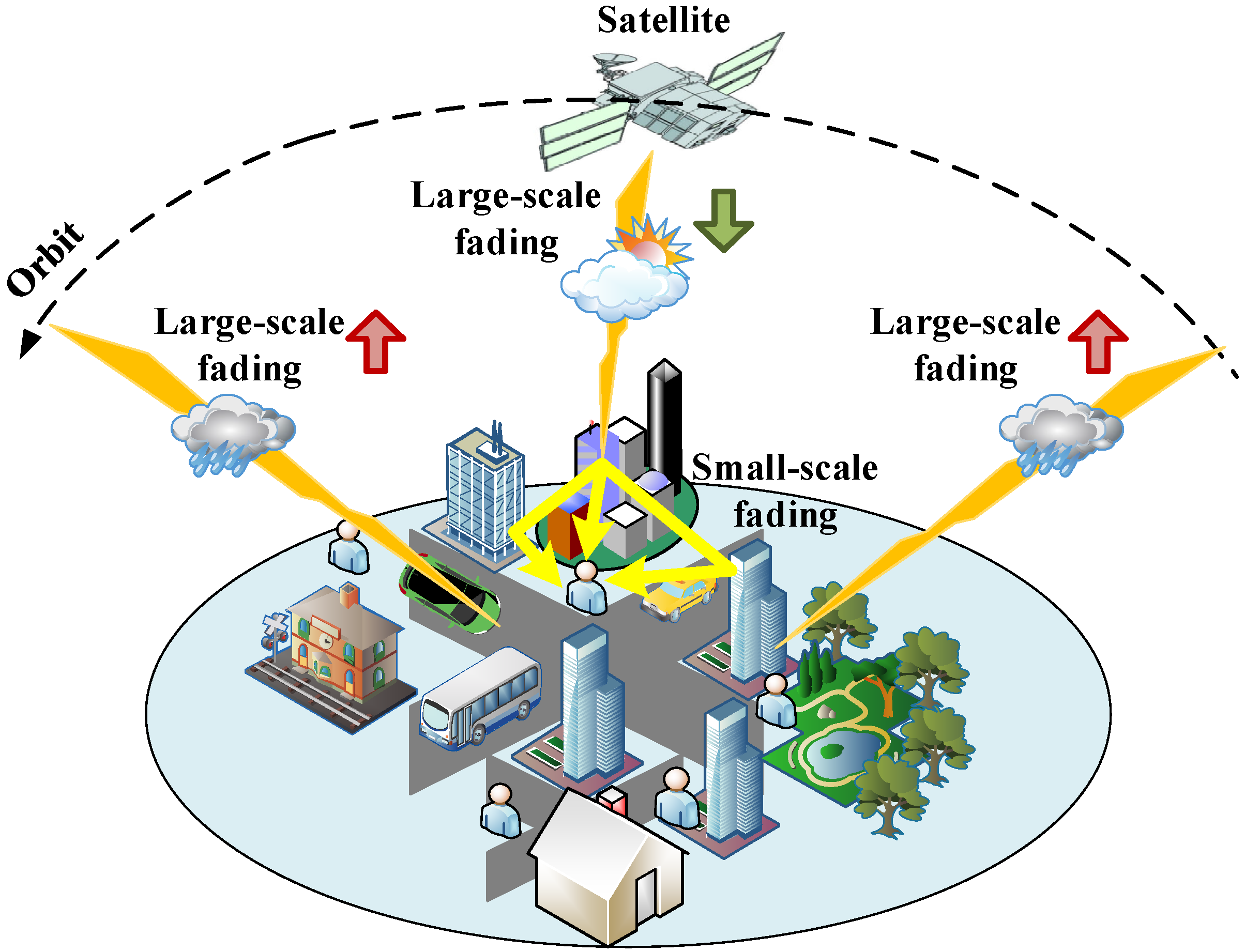


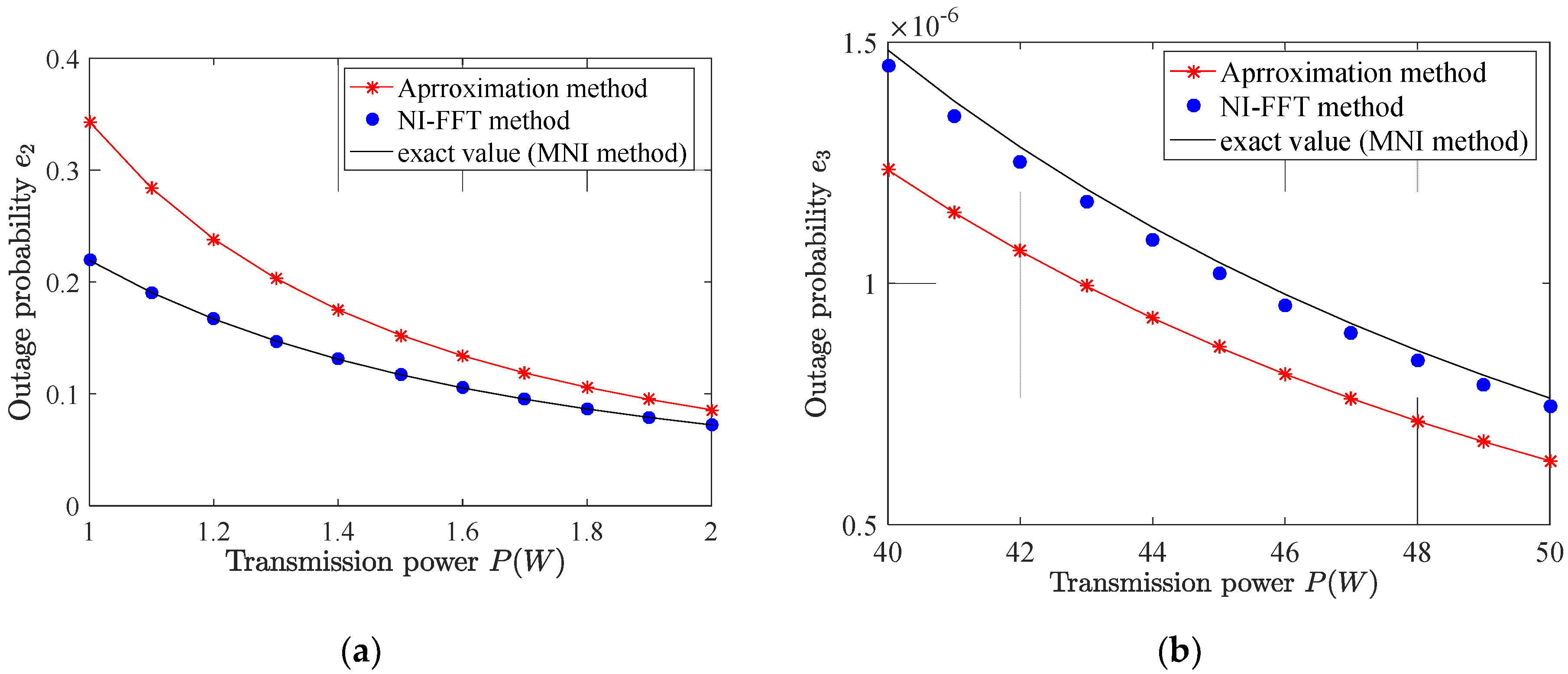

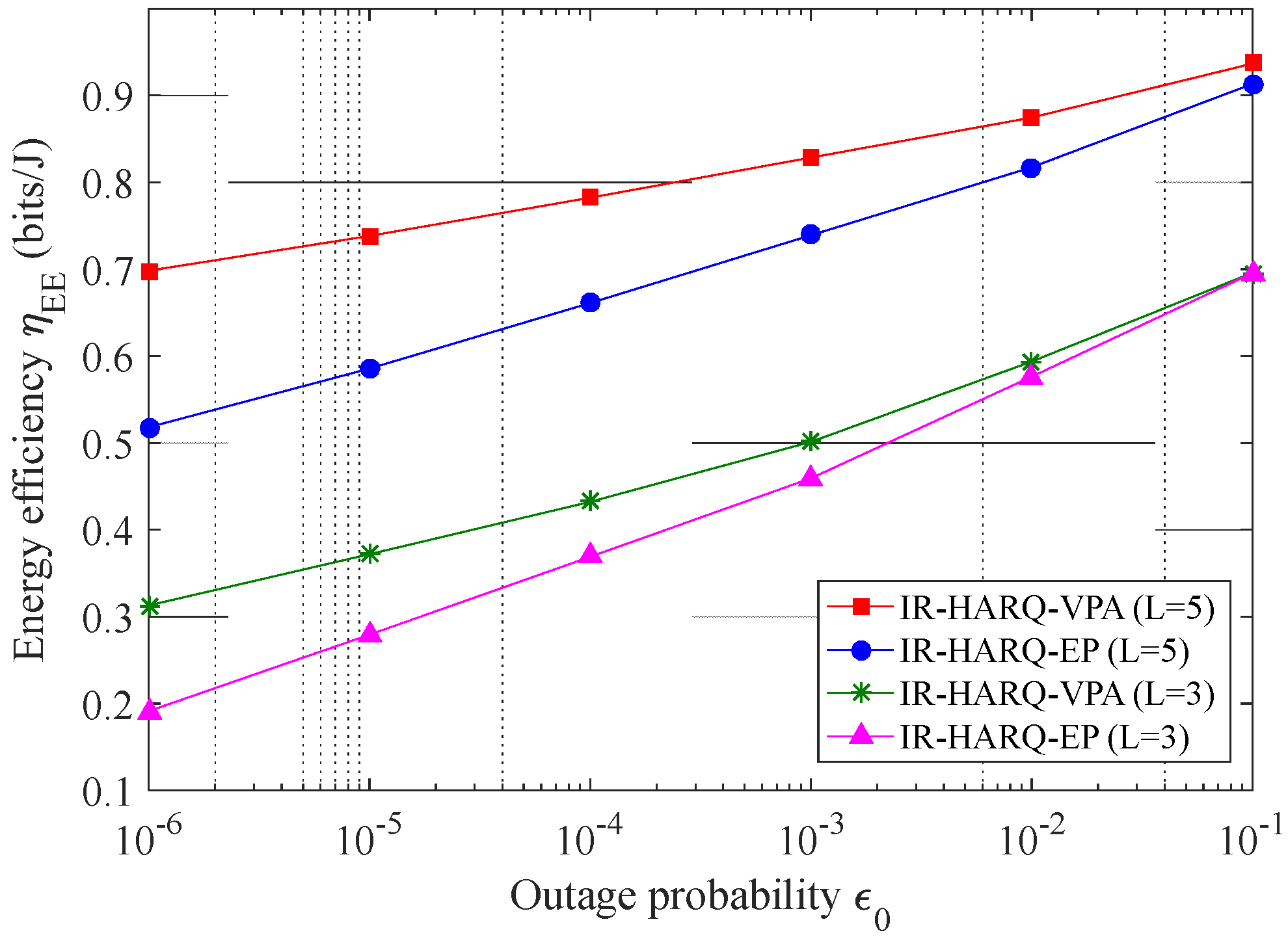
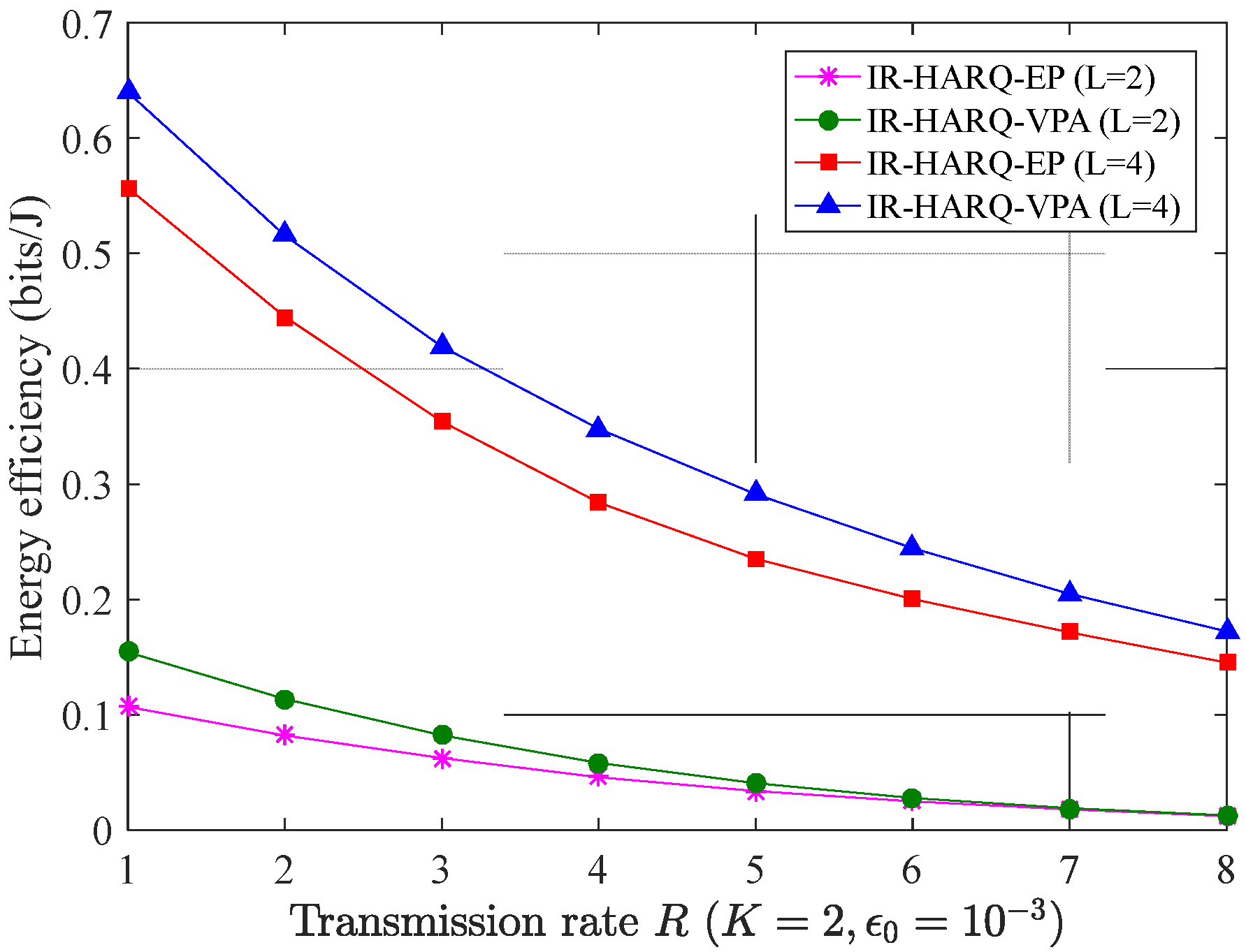
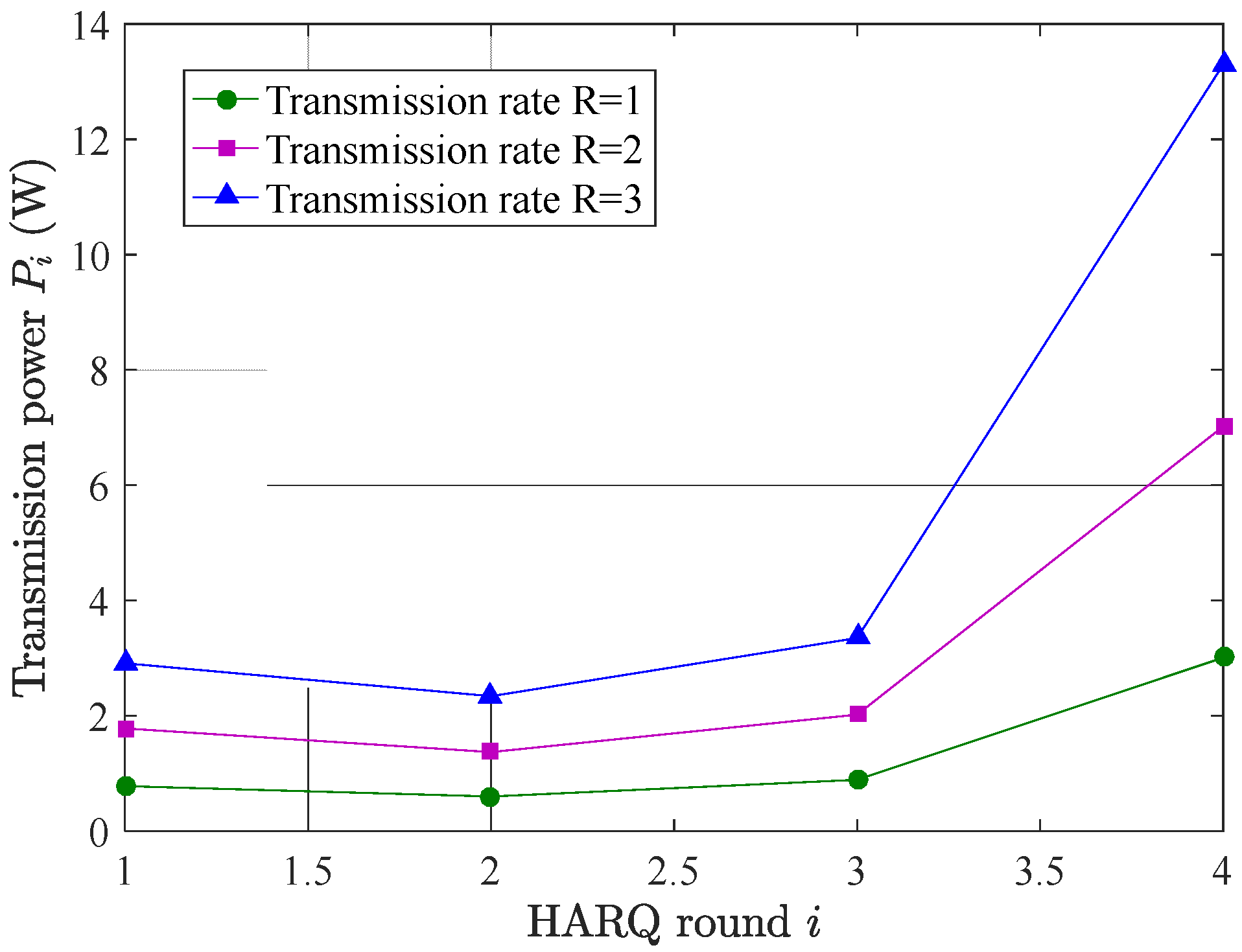

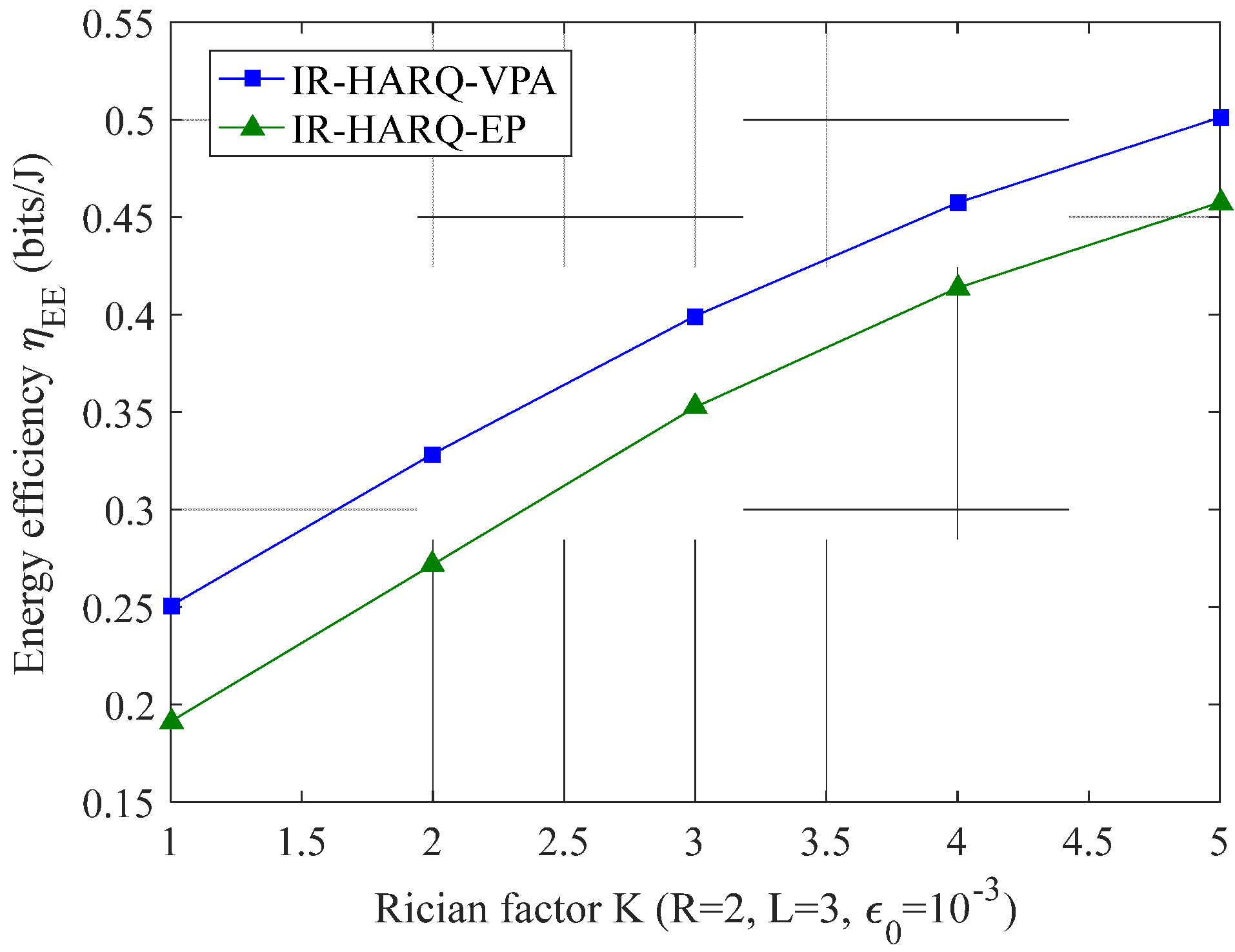
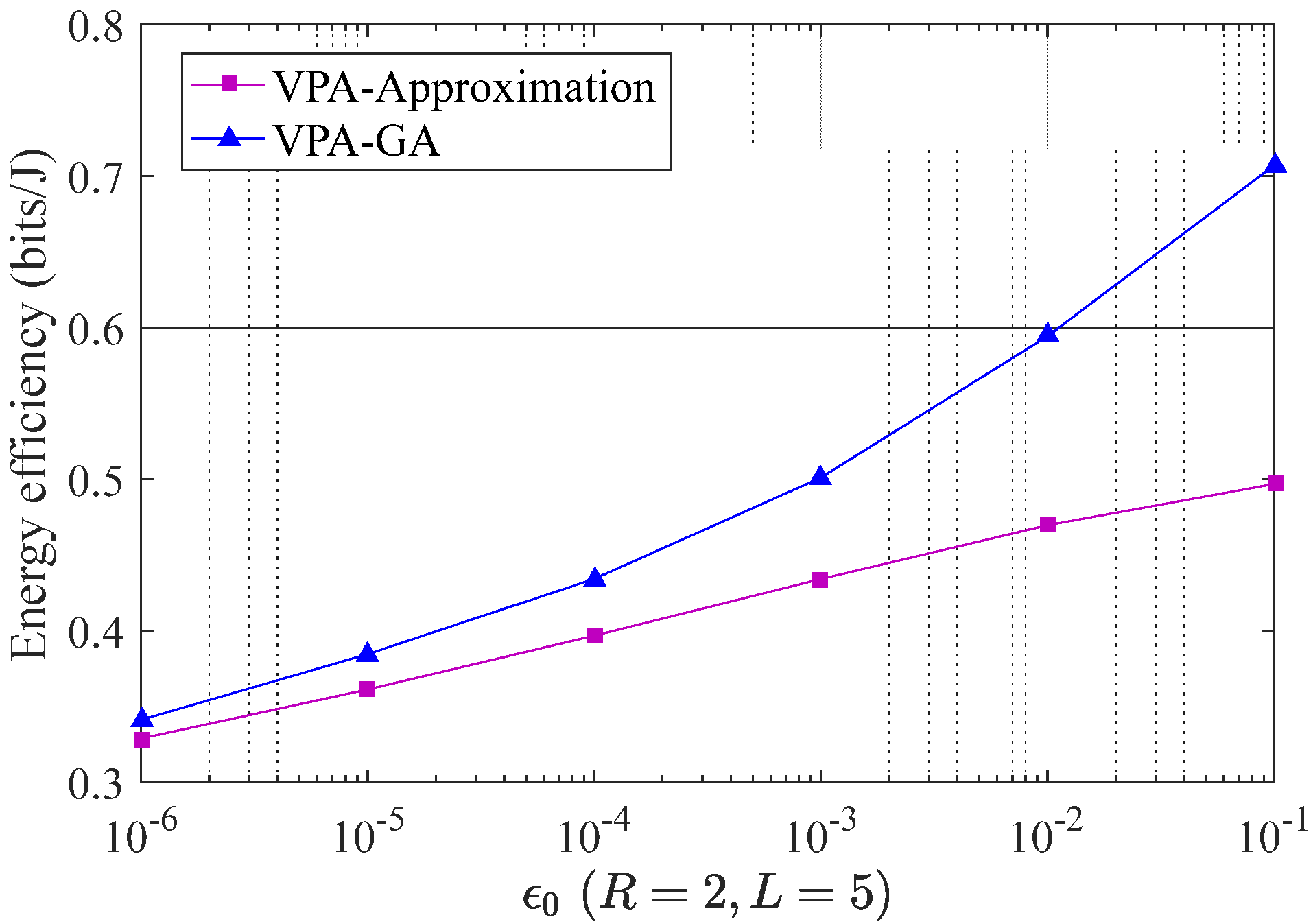
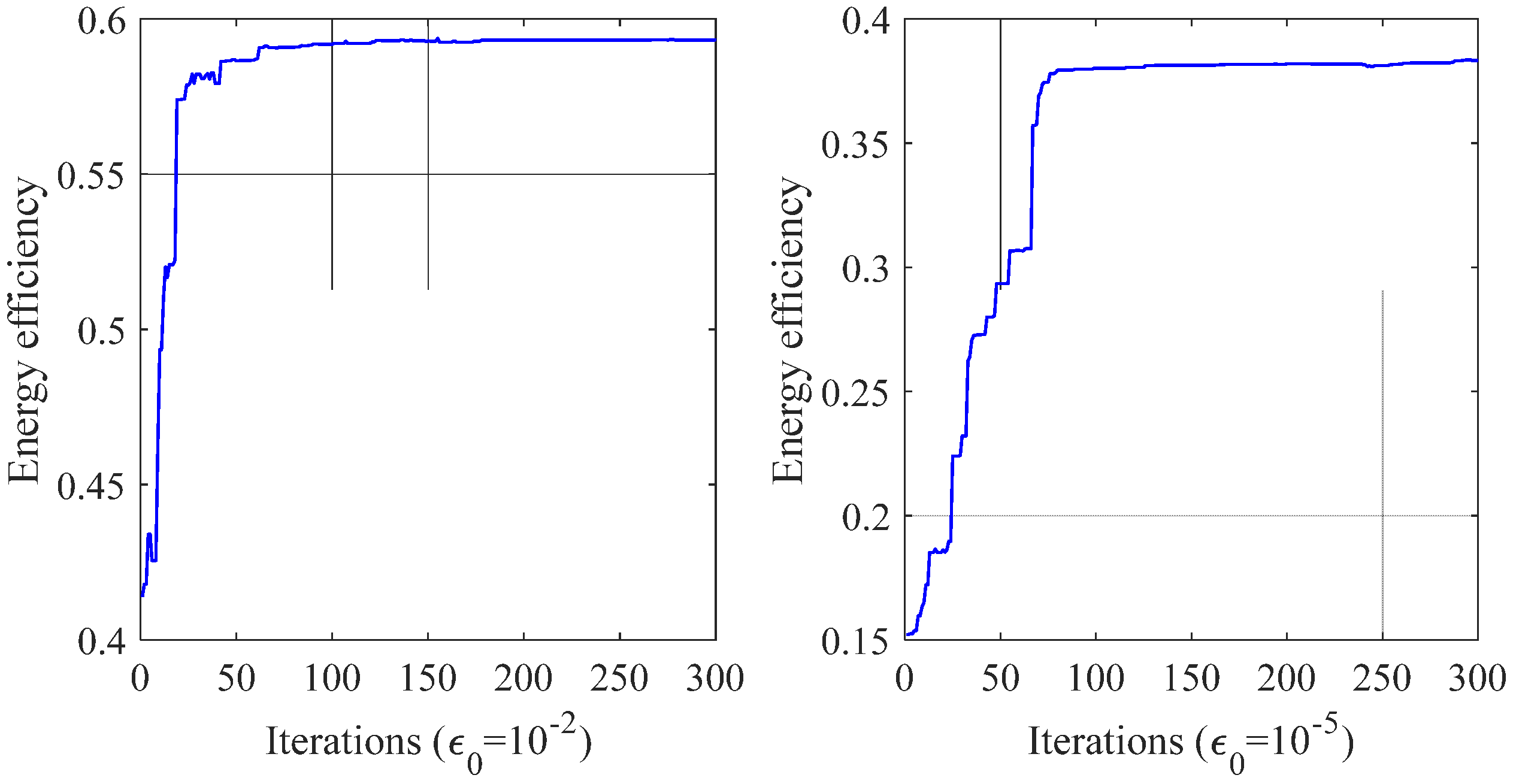
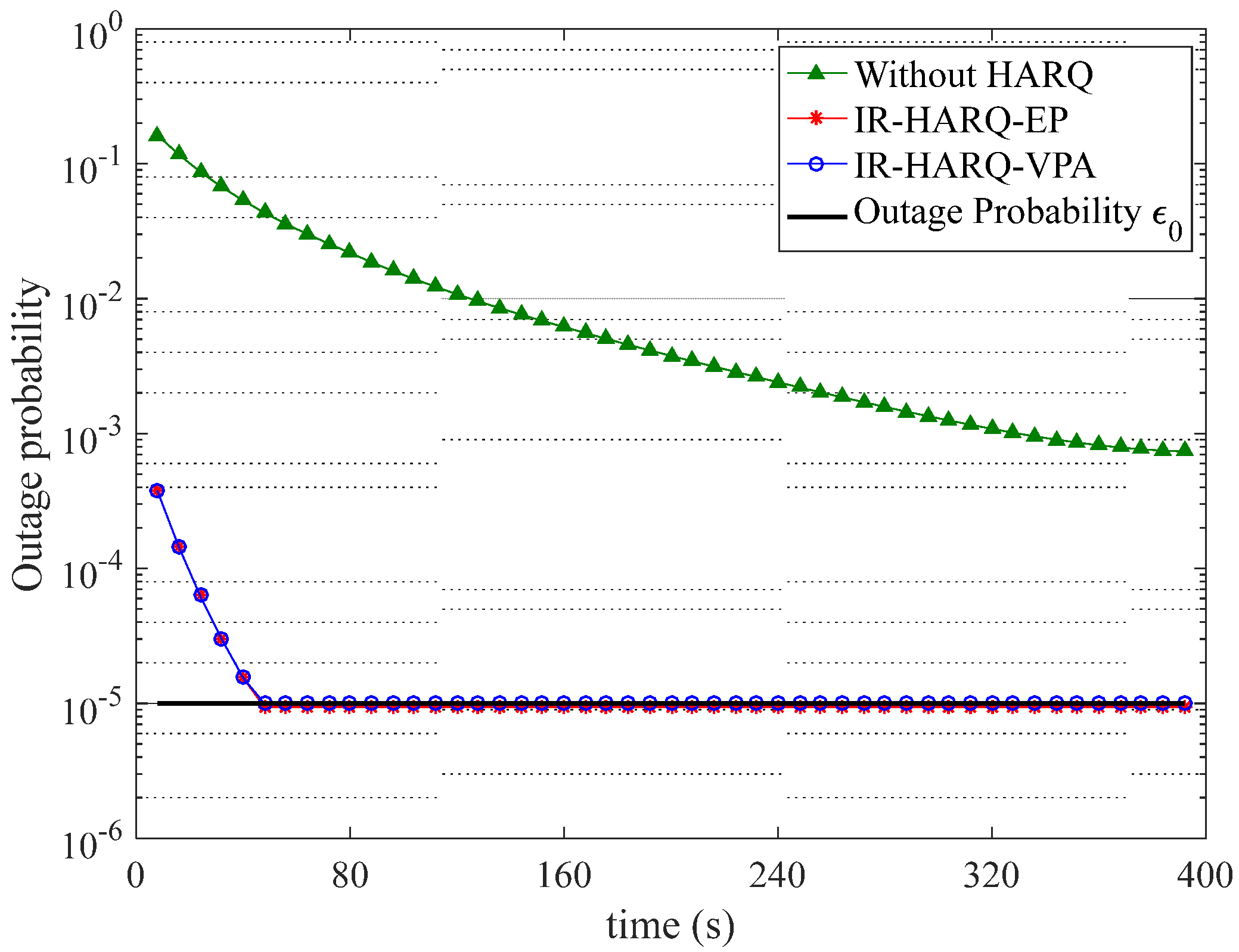
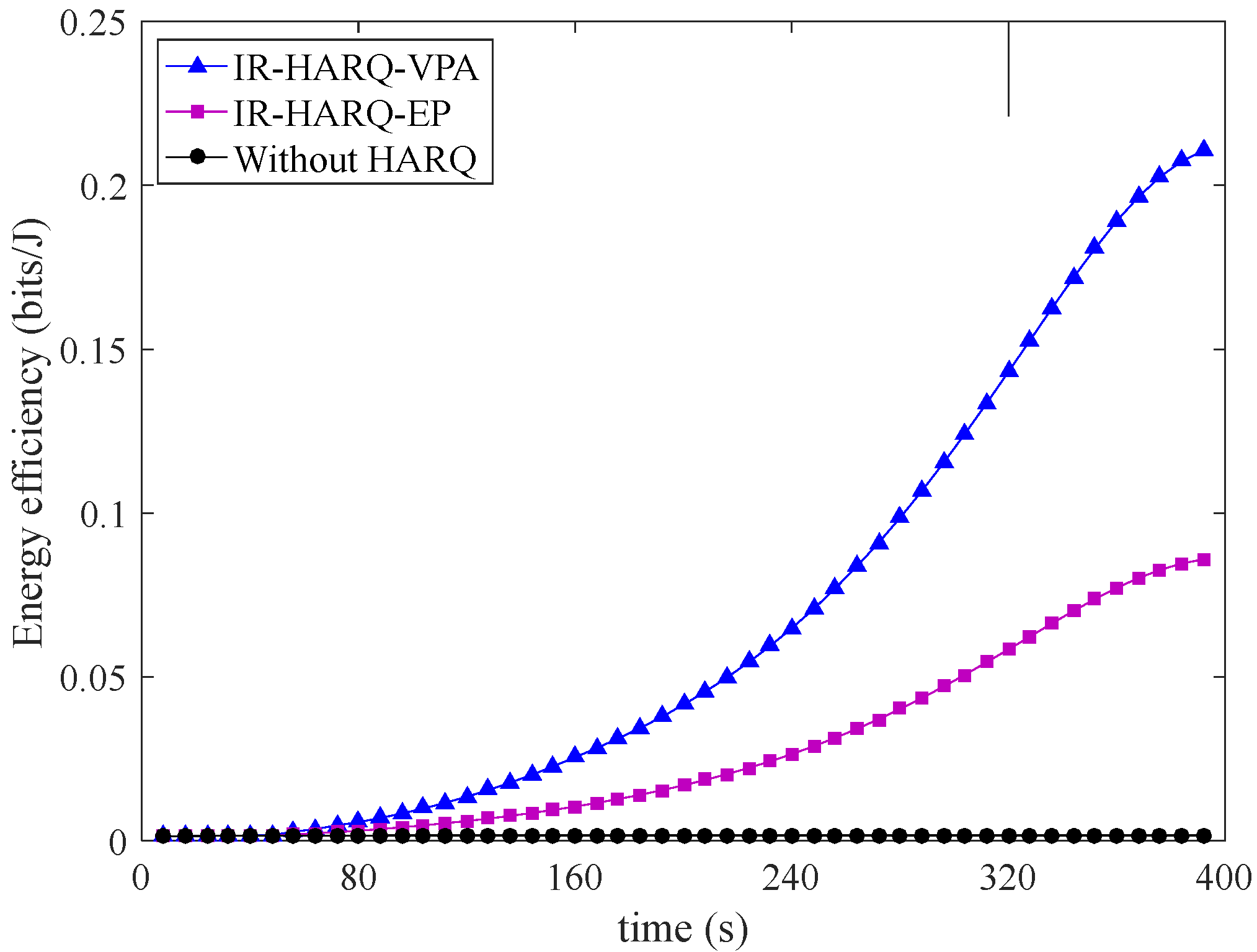
| Notations | Description |
|---|---|
| Distance between the satellite and the ground user | |
| Elevation angle between the satellite and the ground user | |
| Carrier frequency of the system | |
| Speed of light | |
| Free-space path loss | |
| Atmospheric absorption caused by the oxygen | |
| Atmospheric absorption caused by the water vapor | |
| Attenuation caused by the atmospheric gases | |
| Attenuation caused by the clouds and fog | |
| Total columnar content of liquid water | |
| Cloud liquid water specific attenuation coefficient | |
| Specific attenuation defined in [27] | |
| Rainfall rate | |
| Frequency-dependent coefficient defined in [27] | |
| Frequency-dependent coefficient defined in [27] | |
| Effective path length | |
| Carrier to noise ratio | |
| Receive antenna gain | |
| Transmit antenna gain | |
| Receive noise temperature | |
| Boltzman’s constant | |
| Carrier bandwidth |
| Attribute Name | Attribute Value |
|---|---|
| Semi-major axis | 7178.14 km |
| Eccentricity | |
| Inclination | 45° |
| Argument of perigee | 0° |
| Right Ascension of Ascending Node (RANN) | 0° |
| True anomaly |
Publisher’s Note: MDPI stays neutral with regard to jurisdictional claims in published maps and institutional affiliations. |
© 2022 by the authors. Licensee MDPI, Basel, Switzerland. This article is an open access article distributed under the terms and conditions of the Creative Commons Attribution (CC BY) license (https://creativecommons.org/licenses/by/4.0/).
Share and Cite
Bian, H.; Liu, R. Reliable and Energy-Efficient LEO Satellite Communication with IR-HARQ via Power Allocation. Sensors 2022, 22, 3035. https://doi.org/10.3390/s22083035
Bian H, Liu R. Reliable and Energy-Efficient LEO Satellite Communication with IR-HARQ via Power Allocation. Sensors. 2022; 22(8):3035. https://doi.org/10.3390/s22083035
Chicago/Turabian StyleBian, Hongxiu, and Rongke Liu. 2022. "Reliable and Energy-Efficient LEO Satellite Communication with IR-HARQ via Power Allocation" Sensors 22, no. 8: 3035. https://doi.org/10.3390/s22083035
APA StyleBian, H., & Liu, R. (2022). Reliable and Energy-Efficient LEO Satellite Communication with IR-HARQ via Power Allocation. Sensors, 22(8), 3035. https://doi.org/10.3390/s22083035





